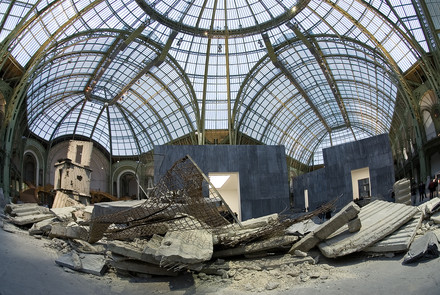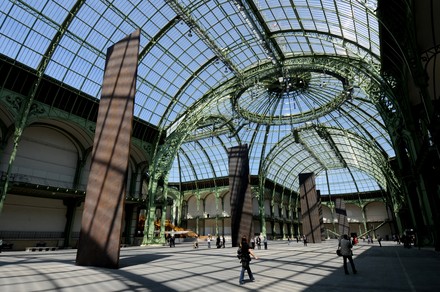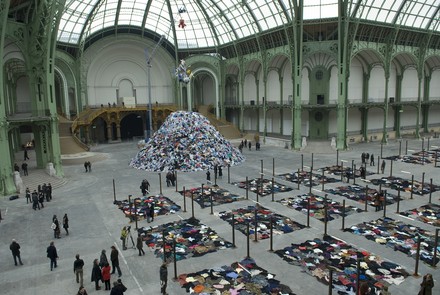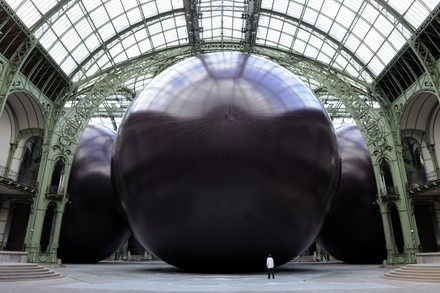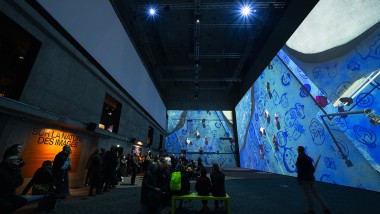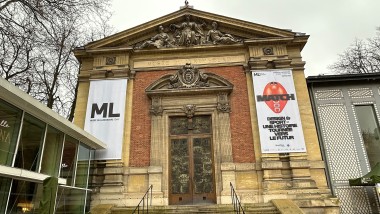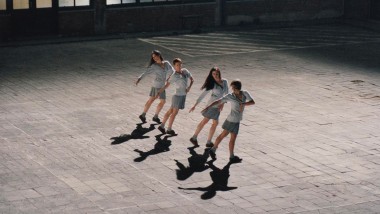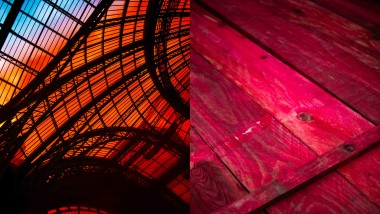Under the immense glass roof of the Grand Palais, Anselm Kiefer created Chute d'étoiles. Dwellings of sheet metal, concrete slab and other salvaged materials formed a makeshift backdrop for paintings by the German artist, accompanied by poetry by Ingebrog Bachmann and Paul Celan, and Louis Ferdinand Céline's famed novel Journey to the End of the Night (Voyage au bout de la nuit). Images and materials worked together to create an intense emotional and aesthetic experience.
"The exhibition at the Grand Palais is called Sternenfall. It's a title I gave to some of my paintings years ago. The title encompasses the birth and death of the universe with all these stars that are born and die every day like human beings. 100 million years for a star is maybe like a minute for us. The time scale is different. And when a star dies, it explodes and becomes incandescent, white, exploding and sending all sorts of debris and dust into the universe at unimaginable distances. This matter comes together, coagulates and forms a new star, another star. Sternenfall speaks of this universal metabolism, this metabolism of nature and stars. The title encompasses not just our lives but the universe." Anselm Kiefer
The event drew more than 135,000 visitors in less than five weeks.
For the second Monumenta exhibition, the American artist Richard Serra, celebrated for his monumental sculptures, presented a masterly and totally original work: five colossal steel slabs erected vertically in the Nave of the Grand Palais. Walking between these metal giants with their patina of rust made for a unique experience. More than just an aesthetic shock, it was a confrontation with the individual's personal sense of finiteness, place in the scheme of things, corporeality.
Visitors each respond in a unique way: some smile quietly to themselves, while others tentatively touch the sculptures, dance as though the pieces were totems, or simply get a strong sense of vertigo! Whatever the individual responses, the exhibition was a big success, drawing 142,000 visitors in 35 days, with a peak attendance on May 17, when France's now traditional Nuit des Musées offered free entrance to museums throughout the country.
A moving ceremony took place in the nave on Tuesday, the 6th of May, as the artist, Richard Serra received the insignia of Commander of the order of Arts and Literature from Christine Albanel, the minister for culture and communication. Deeply moved, Richard Serra reminded those present of the influence of Brancusi and Giacometti on his work.
A unique event took place on June 7 2008 in the Nave: a Solo Piano concert by US composer Philip Glass enthralled an audience of 5,000 in a setting provided by the monumental works of Richard Serra.
The 3rd edition of Monumenta took place not in summer but in winter, in the unheated Nave of the Grand Palais. French artist Christian Boltanski specifically conceived his installation, Personnes, for the Nave, intending it as a powerful physical and psychological experience, with the spectator placed in the heart of the work rather than looking on, and in which the chilling temperatures would play a key part.
Visitors were welcomed by a wall of ageing metal before discovering, in the farthest area of the Nave, beneath the cupola roof, a mountainous pile of clothes. A crane, metaphor for the finger of God, randomly grabbed garments from the pile, discarding others, while around the Nave clothes were laid out on the floor in a grid of rectangles to the accompaniment of amplified heartbeat.
Christian Boltanski was deeply marked by the memory of the Shoah, and designed the installation, combining visual impact and sound, to further explore the issues of the limits of humanity and the necessity for remembrance, the question of destiny and the ineluctability of death.
Monumenta 2010 was a huge success, drawing nearly 150,000 visitors.
For its 4th edition, Monumenta invited Anish Kapoor to install a work in the Grand Palais. After Anselm Kiefer (2007), Richard Serra (2008), and Christian Boltanski (2010), it was the turn of one of the most recognized and honoured artists of his generation to create a work specially for the 13,500 m2 of the Nave.
Born in Bombay in 1954, Anish Kapoor lives and works in London. His most influential works include: Sky Mirror (2001), a gigantic concave mirror reflecting the sky and the street life around the esplanade of the Rockefeller Center in New York; and Cloud Gate (Chicago, 2004), an immense steel structure, absorbing the height of the buildings in its bean-like surface and challenging the city’s totally vertical urban design.
Installed in the Grand Palais from May 11 to June 23 2011, his new work, Leviathan, red in colour, was a technical and artistic feat, a gigantic and sensual experience that produced a stunning effect on visitors.
One week before its closure, the exhibition beat the record attendance for Monumenta, drawing 277,680 visitors, with peaks of up to 10,000 people per day. A team of mediators was on hand to help the public, from wide-ranging backgrounds, to enjoy a unique aesthetic and cultural experience.


